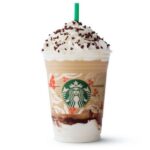What do your motors really do?
In 1969, the first home security system was born, consisting of four peepholes and a camera that could be moved to look through any of them, broadcasting the images to a monitor. Nowadays, we can now stream and view a feed of our home security cameras on our mobiles, giving homeowners greater piece of mind. Here, Markus Brettschneider, of ABB’s food and beverage program, explains how food plant managers can add a similar level of connectivity to retrofit most motors with smart sensors to bring their plants to the digital age. Industry as a whole is utilising technologies and solutions enabled through the industrial internet of things (IIoT). Gartner predicts that 25 billion devices will be connected to the internet of things by 2020, with some agencies predicting even double this amount. This presents plant managers with a conundrum. Most food manufacturing and processing plants currently have motors powering essential equipment such as mixers, conveyors and packaging machines. These motors are just motors and do not play in the same league as the other intelligent devices in their factories. With years of service often left in the motors, it’s difficult for plant managers to justify replacing motors that work effectively for the sake of an upgrade with any smart features. However, there are alternatives to a complete overhaul in order to connect motors to the IIoT. Instead of investing in new, more intelligent or smart equipment, plant managers should invest in sensors that provide similar functionality to connected devices. For example, ABB offers smart sensors, which can be fitted to almost any standard low voltage induction motor. The pocket-sized sensor, dubbed ABB Ability Smart Sensor, is directly attached in a couple minutes to the motor’s frame, without wiring. By using sensors that feed performance data to the cloud through a […]










